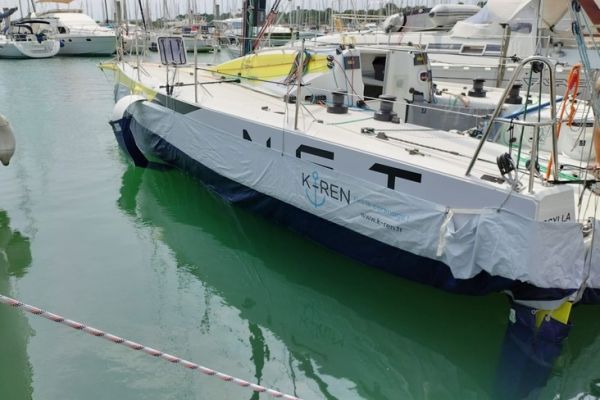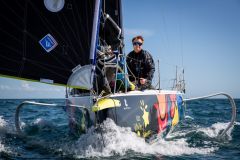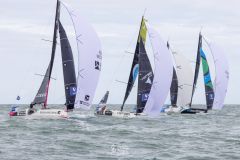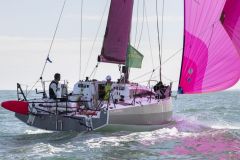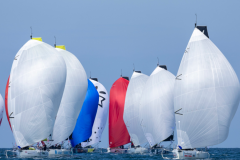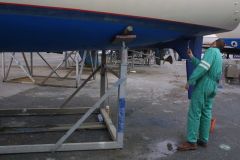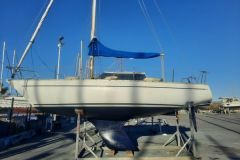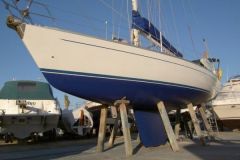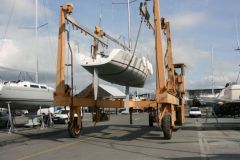Avoiding careening: combining performance and environmental protection
Between the various legs of the Figaro Solo, competitors are not allowed to grill their boats for refit. The same applies to in-water cleaning, a practice which in theory has been forbidden in French ports for several decades. However, it is still frequently used in several series.
In the Figaro class, some competitors, including Philippe Hartz and Quentin Vlaminck, have opted for a protective cover to protect their hulls at each stopover.
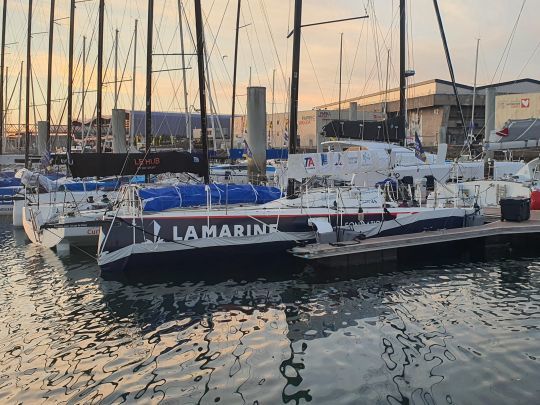
Far from being anecdotal, the performance gains resulting from the use of this cover were confirmed by all observers. So much so, in fact, that some competitors who were unable to fit the product sought to ban it from the Figaro class. An aberration at a time when everyone is supposed to limit their impact, but also an indisputable sign of the product's interest.
How does it work?
The principle of a protective cover is to prevent the development of fouling, composed of living organisms that impair a boat's performance. The cover acts as an anti-UV protection that prevents the proliferation of micro-organisms on the hull.
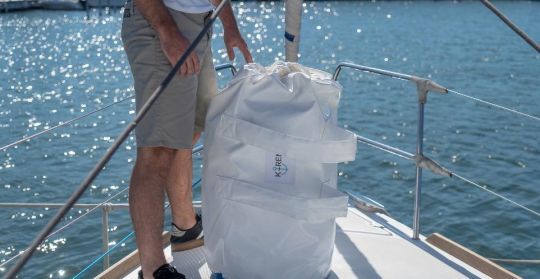
Installed in 30 minutes on a 10m sailboat and removed in 15 minutes, a K-REN cover is very easy to use. Weighing around 15 kg, it can be packed into a bag for easy transport and storage.
Adopted by the Figaro Beneteau class
Aware of the product's effectiveness, combining ecological benefits with optimum performance, the class has decided to continue using this product throughout the fleet and the Figaro championship. A coherent choice that will maintain a fair level of performance for the whole fleet, while preserving the environment a little better.
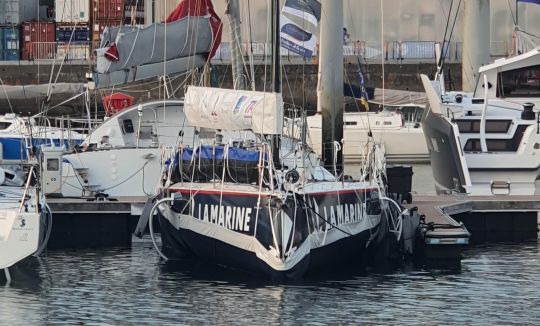

 /
/ 